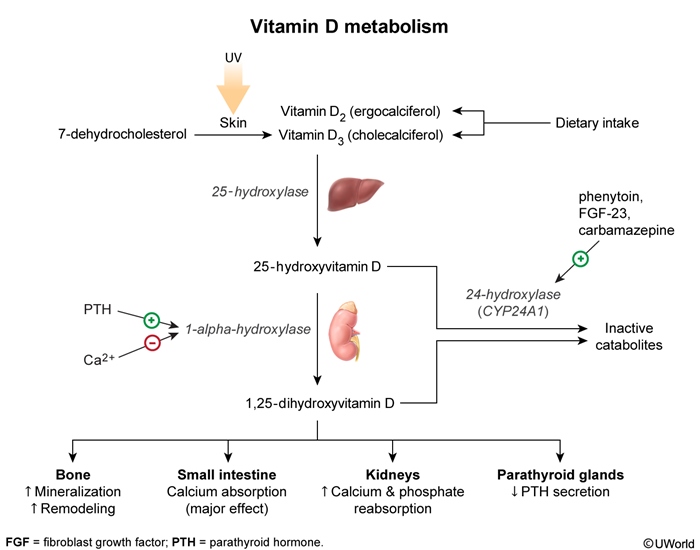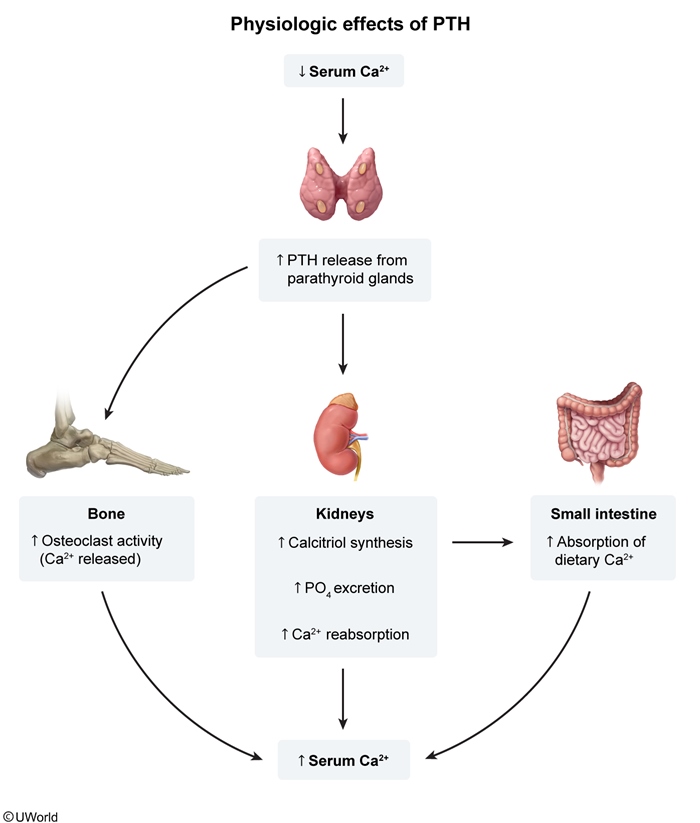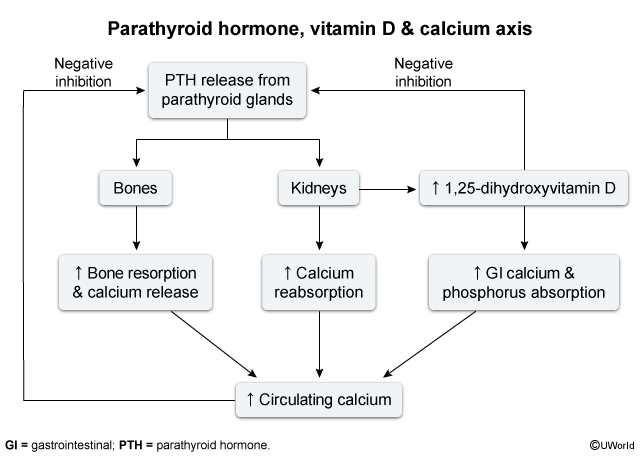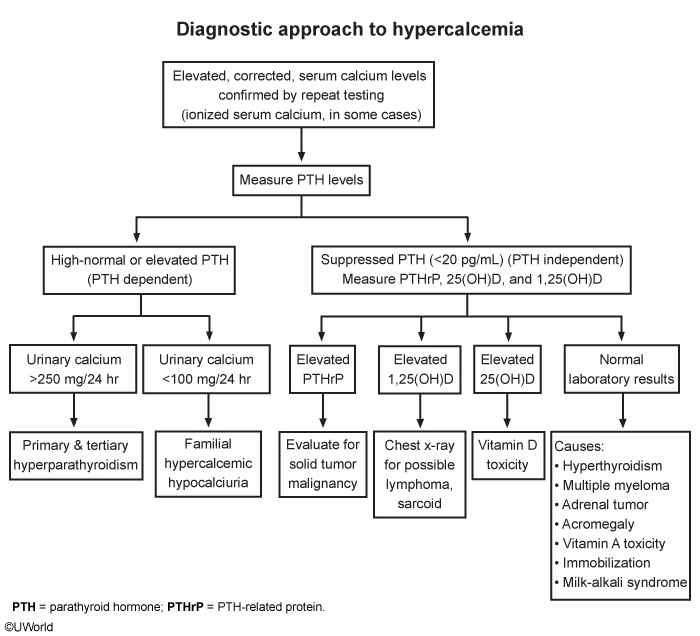Calcium Disorders
Article Sections
Introduction
Calcium is an electrolyte integral to bone health, muscle contraction, neuronal function, and blood clotting. Approximately half the total calcium in the body is bound to proteins, primarily albumin, whereas the other half exists in ionized (free) form. The protein-bound calcium serves as a reservoir, maintaining the levels of ionized calcium (ie, physiologically active form). Therefore, ionized calcium levels are affected by changes in serum albumin, necessitating calculation of a corrected total calcium in patients with abnormal albumin levels. Significant hypercalcemia and hypocalcemia may have potentially life-threatening complications.
Pathophysiology
Calcium balance is tightly regulated by vitamin D (Figure 1) and parathyroid hormone (PTH) (Figure 2). Vitamin D, obtained from dietary sources (vitamin D2 or D3) or synthesized in the skin, is converted in the liver to 25-hydroxyvitamin D. This intermediate is then hydroxylated in the kidneys by 1-alpha-hydroxylase (stimulated by PTH) to form the active 1,25-dihydroxyvitamin D (calcitriol). Calcitriol increases intestinal calcium absorption (main effect) and acts as negative feedback to reduce PTH secretion (by activating the calcium-sensing receptor [CaSR] in the parathyroid glands).
Continue Learning with UWorld
Get the full Calcium Disorders article plus rich visuals, real-world cases, and in-depth insights from medical experts, all available through the UWorld Medical Library.
Figures



